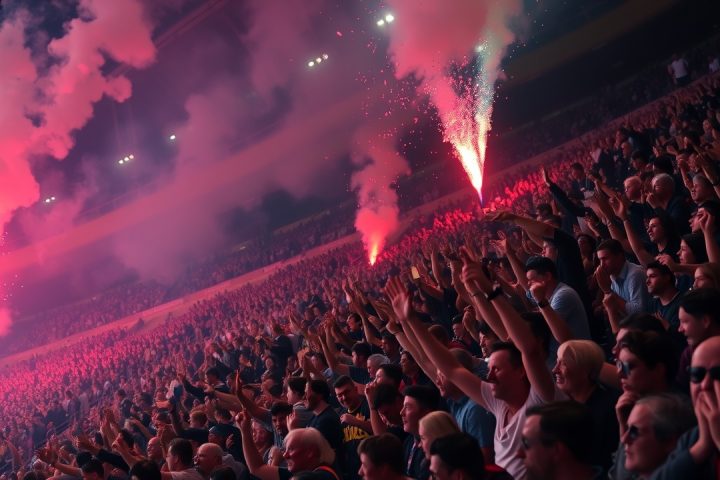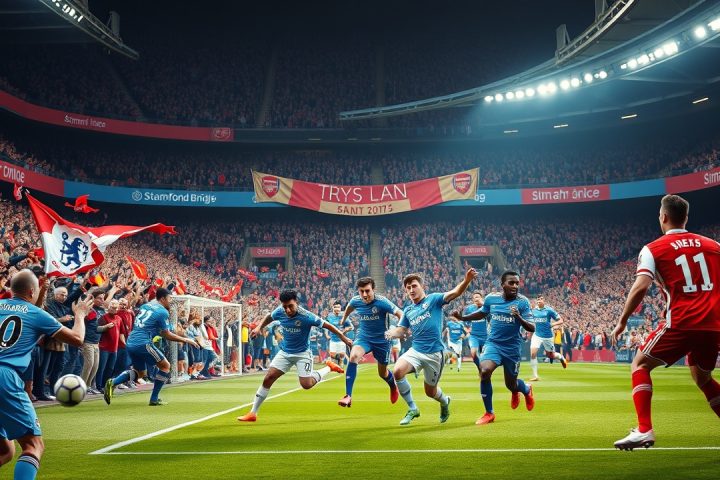Football Kits in the Premier League
The excitement surrounding football kits in the Premier League has grown significantly in recent years, rivaling the anticipation of player transfers during the summer transfer window. Fans eagerly await the unveiling of new home, away, and third jerseys, sparked by a wave of official and leaked images circulating online. This phenomenon has generated a dedicated industry where supporters critique and celebrate these uniforms, including matchday warmup kits that often showcase bold colors and unique patterns.
The Role of Football Kits
David Bruce, Sunderland’s Chief Business Officer, emphasizes the significant role that a football kit plays, viewing fans as living advertisements for the club.
“Customers are, in essence, paying to promote our brand wherever they go,” Bruce articulated. “A well-designed shirt not only reflects their passion and connection to the team but also encourages purchases. It’s an expression of loyalty and identity.”
The Design Process
The journey of creating a Premier League kit begins well ahead of its scheduled release, often starting up to 20 months in advance. For Sunderland’s 2025-26 season home kit, discussions took place during their time in the Championship, identifying themes and inspirations at the forefront.
Utilizing the new Keel Crossing, a soon-to-be-completed footbridge linking the city center to the Stadium of Light, designers aimed for a kit that resonated with the local community. This £31 million structure is seen as a vital connection between Sunderland’s residents and their football heritage.
Rob Revell, the lead designer at Hummel, who has collaborated with Sunderland for three years, noted the importance of reflecting the club’s identity in the design process. He explained that while many clubs provide limited guidance, Sunderland’s clear vision streamlined the process. Revell expertly navigated multiple concepts to land on a design that captured the bridge’s essence.
Finalizing the Kit Design
In crafting the kit, Revell drew upon various architectural elements from the Keel Crossing, incorporating fine details into the jersey’s design. Starting with 20 initial concepts, he iteratively refined his work based on feedback, creating additional designs that explored innovative graphic elements along the kit. After evaluating more than 60 possibilities, a linear graphic inspired by the bridge’s structural aesthetics was chosen for the final design.
This visual motif was not only crucial in ensuring the shirt’s aesthetics but also its practicality, leading to the creation of a sublimation graphic that illustrates how the final design will fit. Further details, such as cuff stripes and a V-neck collar enriched the kit, which also included significant logos representing both the bridge project and the city of Sunderland.
Community Connection and Launch
The result is a jersey that unites the community, symbolized by the motto inscribed in the collar: “Connecting the city to the stadium.” After months of meticulous design work and a green light for production, Sunderland’s new home kit was unveiled, generating both excitement and anxiety as fans awaited its reception.
“Watching fans don the new kit is incredibly rewarding,” Bruce mused. “A favorable reception directly correlates with sales — kids wearing the kit is a sight that brings unparalleled joy.”
Sunderland’s new kit launch was supported by a well-crafted marketing campaign, featuring an engaging video that highlighted both the jersey and its design inspirations. This event not only marked the culmination of a lengthy development process but also reignited the emotional connection between the club and its supporters every time the season began.




